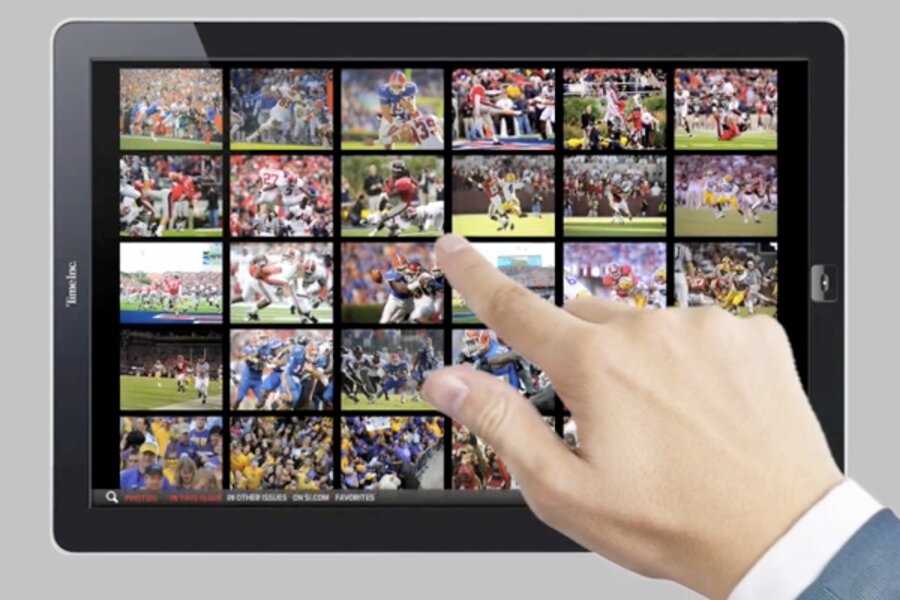As Schmidt defends Google, visions of online news abound
Loading...
Google CEO Eric Schmidt's OpEd – in Wednesday's Wall Street Journal of all places – is largely a defense of his company's role in the newspaper industry's decline.
But more than just offering up a "not-me!" ("'Not Me' doesn't live here," my father used to say) on the death of print, Schmidt's piece offers a look at how online news could adapt and survive.
Instead of today's free model, Schmidt contends that the news consumer of 2015 will see a mix – of subscription, pay-per-click, and ad-supported content.
Some of these stories are part of a monthly subscription package. Some, where the free preview sucks me in, cost a few pennies billed to my account. Others are available at no charge, paid for by advertising. But these ads are not static pitches for products I'd never use. Like the news I am reading, the ads are tailored just for me. Advertisers are willing to shell out a lot of money for this targeting.
And instead of being tied to today's luggable laptops and poky phones, the news landscape of Schmidt's seeing is consumed on behavior-aware, instant-on handheld devices, not, perhaps, too unlike the rumored Apple tablet or the sadly-sacked CrunchPad.
On Wednesday, Time Inc. gave the world a look at its take on the next magazine format. Dubbed their Manhattan Project, and demonstrated in a video (posted below), it's a custom touchscreen interface for interactively viewing Sports Illustrated on a tablet computer.
It includes video, customizable viewing modes, the pinch-to-zoom made popular by Apple's iPhone, and, presumably, the same subscription rate as the dead-tree edition of SI.





